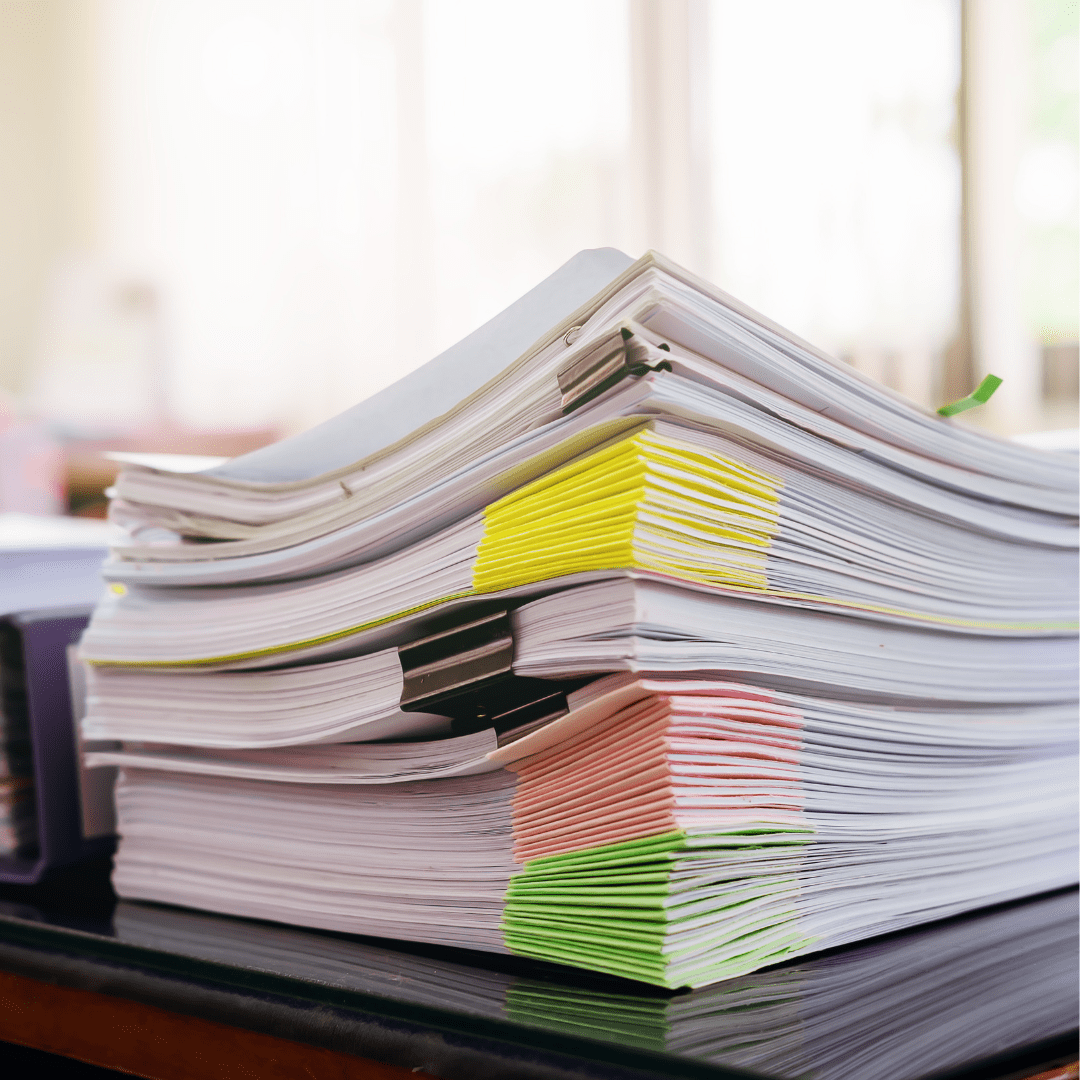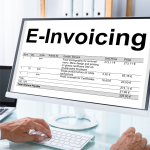Financial Documents Preparation: A Comprehensive Guide
In the realm of business and finance, the preparation of various documents is an essential aspect of daily operations. From invoices to agreements, these documents play a crucial role in ensuring clarity, legality, and professionalism in transactions and relationships. In this article, we will delve into the sample formats and guidelines for preparing common financial documents such as invoices, estimates, Memorandum of Understanding (MoU), agreements, and partnership agreements. We’ll outline the processes involved and provide detailed examples for each document type.
Invoice Generation Format – Documents Preparation
An invoice is a document issued by a seller to a buyer that indicates the products or services provided, their quantities, and agreed-upon prices. Here’s a sample format for an invoice:
Sample Invoice Format:
Company Logo and Contact Information:
- [Your Company Logo]
- Company Name
- Address
- Phone Number
- Email Address
- Website
Invoice Details:
- Invoice Number: [Unique Identifier]
- Invoice Date: [Date of Issuance]
- Due Date: [Payment Due Date]
- Customer Information: [Name, Address, Contact Details]
Description of Goods/Services:
- [Item Description]
- [Quantity]
- [Unit Price]
- [Total Price]
Subtotal:
- [Subtotal Amount]
Tax:
- [Tax Rate]
- [Tax Amount]
Total Amount Due:
- [Total Amount Including Tax]
Payment Instructions:
- [Payment Methods Accepted]
- [Bank Account Details]
Estimate Sample Format – Documents Preparation
An estimate is a document that provides an approximation of the costs associated with providing goods or services. It helps clients understand the anticipated expenses. Here’s a sample format for an estimate:
Sample Estimate Format:
Company Logo and Contact Information:
- [Your Company Logo]
- Company Name
- Address
- Phone Number
- Email Address
- Website
Estimate Details:
- Estimate Number: [Unique Identifier]
- Estimate Date: [Date of Issuance]
- Validity Period: [Validity Duration]
- Customer Information: [Name, Address, Contact Details]
Description of Goods/Services:
- [Item Description]
- [Quantity]
- [Unit Price]
- [Total Estimated Price]
Total Estimated Cost:
- [Total Estimate Amount]
Terms and Conditions:
- [Payment Terms]
- [Validity of Estimate]
- [Other Relevant Terms]
Memorandum of Understanding (MoU) Sample Format – Documents Preparation
An MoU is a non-binding agreement between two or more parties outlining the terms and details of their cooperation or collaboration. Here’s a sample format for an MoU:
Sample MoU Format:
Title:
- Memorandum of Understanding (MoU) between [Party A] and [Party B]
Date:
- [Date of Agreement]
Parties Involved:
- [Party A]
- [Party B]
Purpose:
- [Brief Description of Purpose]
Terms and Conditions:
- [List of Agreed Upon Terms]
- [Duration of Agreement]
- [Responsibilities of Each Party]
Signatures:
- [Signature of Party A]
- [Signature of Party B]
How to Write Agreements – Documents Preparation
Agreements are legally binding documents that outline the terms and conditions agreed upon by two or more parties. Here’s a step-by-step guide on how to write agreements:
Step 1: Define the Parties Involved
Identify all parties involved in the agreement and provide their full legal names and contact information.
Step 2: State the Purpose
Clearly state the purpose or objective of the agreement to ensure mutual understanding.
Step 3: Outline Terms and Conditions
List down the terms and conditions agreed upon by all parties involved. Include details such as payment terms, deliverables, timelines, and any other relevant provisions.
Step 4: Include Legal Language
Ensure that the agreement is legally binding by including appropriate legal language. If necessary, seek legal advice to draft or review the agreement.
Step 5: Review and Sign
Review the agreement thoroughly to ensure accuracy and completeness. Once satisfied, all parties should sign the agreement to signify their acceptance and commitment.
Partnership Agreement Sample Format – Documents Preparation
A partnership agreement is a legal document that outlines the terms and conditions of a partnership between two or more individuals or entities. Here’s a sample format for a partnership agreement:
Sample Partnership Agreement Format:
Title:
- Partnership Agreement between [Partner 1] and [Partner 2]
Date:
- [Date of Agreement]
Parties Involved:
- [Partner 1]
- [Partner 2]
Business Details:
- Business Name: [Name of Partnership Business]
- Nature of Business: [Description of Business Activities]
- Duration of Partnership: [Start Date – End Date, if applicable]
Terms and Conditions:
- [Capital Contributions]
- [Profit Sharing Ratio]
- [Roles and Responsibilities of Each Partner]
- [Decision-Making Process]
- [Dispute Resolution Mechanism]
Dissolution:
- [Procedure for Dissolving the Partnership]
- [Distribution of Assets and Liabilities]
Signatures:
- [Signature of Partner 1]
- [Signature of Partner 2]
Day-to-Day Use for Financial Documents Preparation
Financial documents play a pivotal role in the day-to-day operations of businesses across various industries. Here’s a closer look at how these documents are utilized in everyday scenarios:
Invoicing:
- Regular Transactions: Businesses issue invoices to clients for products sold or services rendered on a daily basis.
- Payment Tracking: Invoices serve as a record of transactions and aid in tracking payments from clients.
- Cash Flow Management: Monitoring invoiced amounts helps businesses manage their cash flow effectively.
Estimates:
- Client Engagement: Providing estimates helps businesses engage with potential clients by giving them an idea of the expected costs.
- Project Planning: Estimates assist in planning projects by outlining anticipated expenses and resource requirements.
- Negotiation Tool: Estimates serve as a basis for negotiations with clients regarding project scope and pricing.
Memorandum of Understanding (MoU):
- Partnership Formation: MoUs facilitate the formation of partnerships or collaborations by defining the terms and objectives of the relationship.
- Project Initiation: In complex projects involving multiple stakeholders, MoUs clarify roles, responsibilities, and expectations at the outset.
- Legal Clarity: While not legally binding, MoUs provide a framework for subsequent legally binding agreements.
Agreements:
- Contractual Obligations: Agreements formalize contractual relationships between parties, outlining rights, responsibilities, and remedies.
- Risk Mitigation: Clearly defined terms and conditions in agreements help mitigate potential disputes and legal risks.
- Compliance: Agreements ensure compliance with legal and regulatory requirements governing business transactions.
Partnership Agreements:
- Business Structure: Partnership agreements establish the structure and framework for managing partnerships, including profit-sharing arrangements and decision-making processes.
- Conflict Resolution: These agreements outline procedures for resolving disputes between partners, thereby fostering smoother business operations.
- Succession Planning: Partnership agreements may include provisions for succession planning, addressing scenarios such as partner retirement or exit.
Clearing Guidelines and Processes – Documents Preparation
Ensuring the accuracy and effectiveness of financial documents requires adherence to clear guidelines and processes. Here’s a brief overview:
Documents Preparation Guidelines:
- Consistency: Maintain consistency in formatting and language across all documents to enhance clarity and professionalism.
- Accuracy: Double-check all information included in documents to avoid errors or discrepancies that could lead to misunderstandings.
- Legal Compliance: Ensure that all documents comply with relevant legal and regulatory requirements to prevent legal issues in the future.
Documents Approval Process:
- Review and Approval: Establish a review process involving relevant stakeholders to review and approve financial documents before issuance.
- Authorization: Define clear protocols for obtaining authorization signatures or approvals from authorized personnel before finalizing and distributing documents.
- Version Control: Implement version control mechanisms to track changes and revisions made to documents throughout the preparation process.
Document Storage and Retrieval:
- Centralized Repository: Maintain a centralized repository for storing all financial documents, ensuring easy access and retrieval when needed.
- Organization: Implement a systematic filing system to organize documents by type, date, or project, facilitating efficient document management.
- Security Measures: Implement security measures to protect sensitive financial information from unauthorized access or breaches.
Importance of Financial Documents Preparation
Financial document preparation is a critical aspect of business operations, serving several important purposes:
Legal Protection:
- Documentation of Transactions: Financial documents such as invoices, agreements, and MoUs provide written evidence of transactions and agreements, offering legal protection in case of disputes or disagreements.
- Compliance: Properly prepared financial documents ensure compliance with legal and regulatory requirements, minimizing the risk of penalties or legal action.
Financial Management:
- Budgeting and Planning: Accurate financial documents, including estimates and invoices, aid in budgeting and financial planning by providing insights into income, expenses, and cash flow.
- Decision Making: Financial documents serve as a basis for informed decision-making, enabling businesses to assess profitability, allocate resources effectively, and identify areas for improvement.
Client Relationships:
- Professionalism: Well-prepared financial documents enhance professionalism and credibility, fostering trust and confidence in client relationships.
- Clear Communication: Clear and detailed financial documents, such as estimates and contracts, help prevent misunderstandings and ensure alignment of expectations between parties.
Business Growth:
- Scalability: Standardized document preparation processes facilitate scalability by enabling businesses to efficiently handle increasing transaction volumes and expand their operations.
- Risk Management: Properly prepared financial documents contribute to risk management efforts by identifying and addressing potential financial risks, such as late payments or disputes.
Tips for Effective Financial Documents Preparation
To maximize the effectiveness of financial document preparation processes, consider the following tips:
Use Templates:
- Utilize pre-designed templates or software tools for creating financial documents to ensure consistency, accuracy, and efficiency.
Double-Check Details:
- Thoroughly review all information included in financial documents to ensure accuracy and completeness, paying close attention to numerical figures and contractual terms.
Customize for Specific Needs:
- Tailor financial documents to suit the specific needs and requirements of each transaction or business relationship, incorporating relevant terms, conditions, and details.
Seek Legal Advice:
- Consult with legal professionals or experts in contract law to ensure that financial documents are legally sound, enforceable, and compliant with relevant regulations.
Maintain Documentation:
- Keep organized records of all financial documents, including drafts, final versions, and related correspondence, for future reference, audit purposes, and compliance.
Regular Updates:
- Periodically review and update financial document templates and processes to reflect changes in business practices, regulations, or market conditions.
FAQs:
Q: What are financial documents, and why are they important in business? A: Financial documents are written records that detail financial transactions, agreements, and other relevant information in business. They are important for legal protection, financial management, and maintaining professional relationships.
Q: What are some common types of financial documents used in business operations? A: Common types of financial documents include invoices, estimates, Memorandum of Understanding (MoU), agreements, and partnership agreements.
Q: How can I ensure the accuracy of financial documents? A: To ensure accuracy, it’s essential to double-check all details, use standardized templates, seek legal advice if necessary, and maintain organized documentation.
Q: Why is it important to customize financial documents for specific needs? A: Customizing financial documents ensures that they address the unique requirements of each transaction or business relationship, enhancing clarity and effectiveness.
Q: How can financial documents contribute to legal protection in business transactions? A: Financial documents serve as evidence of agreements and transactions, providing legal protection in case of disputes or legal challenges.
Q: What steps should I take to prepare effective financial documents? A: Steps for preparing effective financial documents include using templates, double-checking details, customizing for specific needs, seeking legal advice, and maintaining organized records.
Q: How often should financial document templates be updated? A: Financial document templates should be periodically reviewed and updated to reflect changes in business practices, regulations, or market conditions.
Q: What role do financial documents play in client relationships? A: Financial documents, such as estimates and contracts, contribute to clear communication and professionalism in client relationships, fostering trust and confidence.
Q: How can standardized document preparation processes benefit businesses? A: Standardized document preparation processes enhance efficiency, consistency, and scalability, enabling businesses to handle increasing transaction volumes and expand their operations.
Q: What should I do if I encounter discrepancies or errors in financial documents? A: If discrepancies or errors are found in financial documents, it’s important to address them promptly by reviewing and correcting the documents and communicating with relevant parties as needed
Conclusion
In conclusion, the preparation of financial documents and business agreements requires careful attention to detail and adherence to legal standards. By following the sample formats and guidelines provided in this article, businesses can ensure clarity, professionalism, and legal compliance in their transactions and relationships. Remember to customize these formats to suit your specific business needs and seek legal advice when necessary to ensure the validity and enforceability of your documents.
As a seasoned expert in business administration and financial management, Noor Siddiqui brings extensive experience in guiding businesses through the intricacies of financial document preparation. With a keen eye for detail and a commitment to excellence, Noor’s insights in this article aim to empower businesses with practical strategies and sample formats to streamline their document processes effectively.




